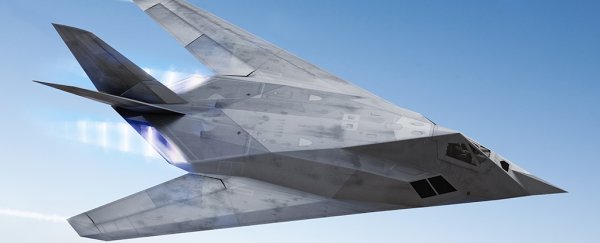The high-tech, next-generation radar-cloaking materials being developed by scientists around the world could breach the Geneva Conventions on the rules of war, a military lawyer has warned. Hiding weapons from view and disguising fighter jets could well breach the universally agreed rules of armed conflict, according to ex-air commodore Bill Boothby, who previously worked as the deputy director of the UK's Royal Air Force legal services.
Right now, huge amounts of funding are being poured into the development of 'metamaterials' that can make aircraft or troops essentially invisible, by bending or absorbing light around them, or by fooling radar scanner waves. While basic cloaking technology exists already, Boothby believes that the next generation of improvements could get armies and air forces into territory that's technically illegal.
"Conventional camouflage aimed, for example, at causing the enemy to blend into the background, is lawful and bending light might be regarded simply as a technologically sophisticated way of achieving that outcome," he told The Guardian. However, if camouflage is used by soldiers and vehicles to pretend to be non-combatants, that could be a problem.
Also outlawed is the misuse of enemy, UN, protective or neutral signs, and flags and emblems. Those involved in combat are obliged to wear a fixed distinctive sign recognisable at a distance and to carry arms openly - conditions that could be violated as 'invisibility cloak' technology is developed further.
"A combatant whose weapon is rendered invisible by its coating is arguably not complying with the minimal requirements [of the Conventions]," explains Boothby in his new book, Weapons and the Law of Armed Conflict.
One of the technologies under scrutiny from Boothby is the Adaptiv camouflage system, being developed by US-based company, Bae Systems (whose slogan appears to be "If the enemy cannot see you, he cannot fire at you!").
By picking up infrared readings of the background scenery, this system can make a vehicle match the same heat pattern, and effectively become invisible. Or you could use the system to turn a tank into something that looks like a civilian car on enemy radars, which again might not fit into the rules of war laid down by the Geneva Conventions.
In his book, Boothby also looks at the issue of killer drones that can work without any kind of human intervention. He says that as long as there are human supervisors present who can make calls between civilian and military targets, these types of weapons should remain legal. However, the supervisor's workload should be low enough to "ensure that proper decisions are made" during combat.
"An outright ban of autonomy in weapon systems is premature and inappropriate, difficult to enforce and perhaps easy to circumvent," he told The Guardian. "Existing law should be applied to this as to any other technology in warfare."
The last of the four treaties that make up the Geneva Conventions was signed in 1949 - it's possible that a fifth will need to be drawn up to take into account the stealth technology being developed at the cutting edge of military hardware.
